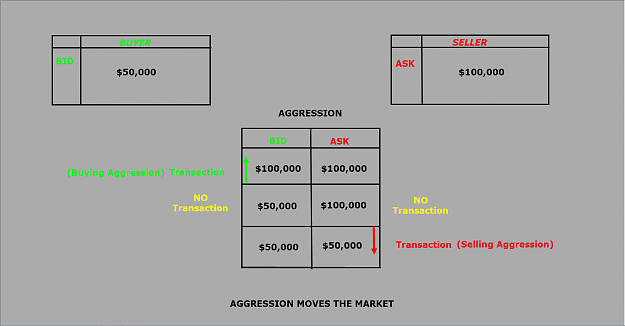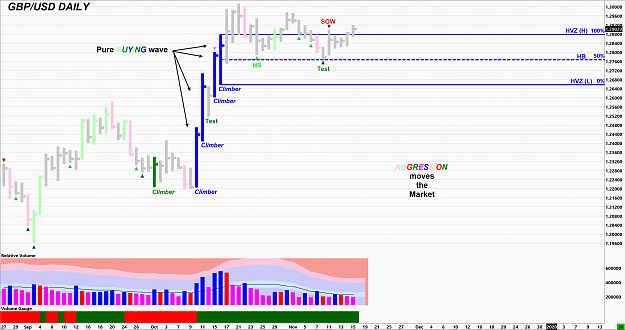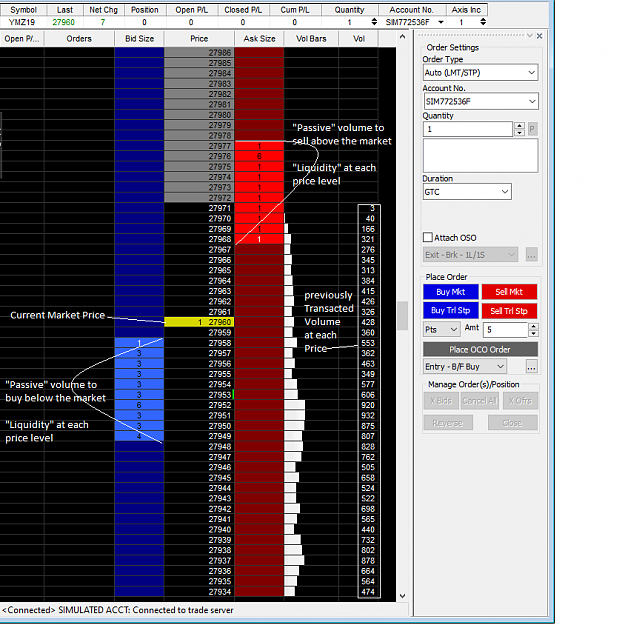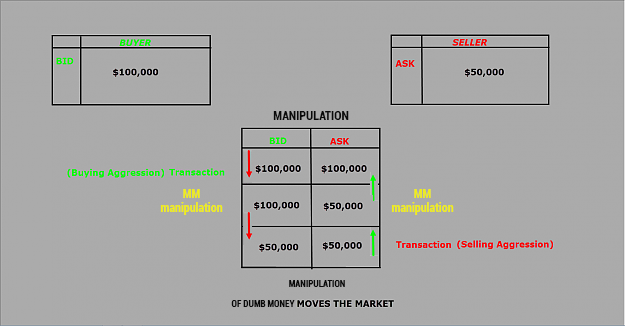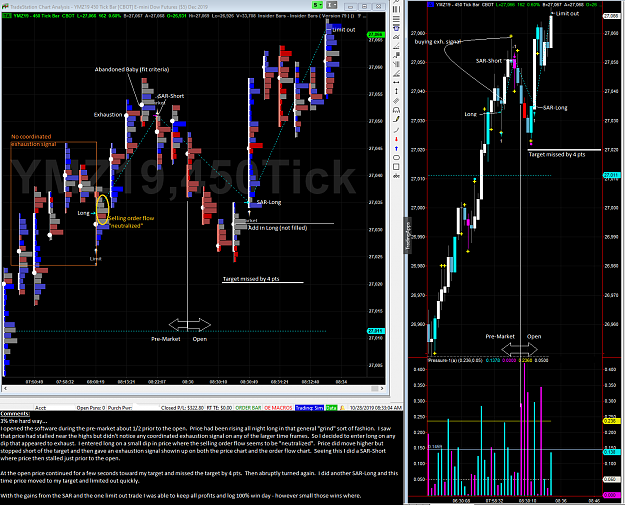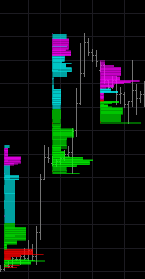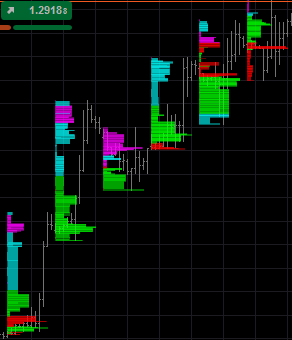Hello Friends
I am starting a new thread to (hopefully) generate some productive discussions on the above subject Order flow/Volume. I have long wanted to have a thread dedicated to this subject but whenever I start it I am sidetracked by other issues or just rude insulting people that want to come in an "nay say" everything brought up. I hope if you are one such person you will kindly move along. I have addressed this issue (Order flow/Volume) in several different threads each relating to either how to recognize and anticipate price movements or how to recognize and anticipate 'exhaustion' in an ongoing price movement, which may eventually lead to a swing point and/or reversal.
Yesterday a member who's opinion I have come to respect wanted to delve deeper into this subject but I declined at the risk of "hi-jacking" someone else's thread who was asking for commentary on how to develop a "higher probability" trading method. And this really brings me to the point of this new thread, and that is; Trading in terms of mathematics will ultimately fail. I know I'll get some push back on this and understand why. This kind of business attracts many kinds of people, but is especially attractive to those who like numbers...specifically numbers games.
This is where many get the idea that trading and markets are similar in nature to gambling or gaming. Nothing could be farther from the truth. My point is this however, is NOT to discuss the differences or similarities between trading and gambling. My point in this thread is to discuss the very basis of market interactions from a structural point of view.
By this I mean actual structure (some call it mechanics - who are obviously mechanically inclined). As I have stated before on many different threads, the market is made up of four main structural components: (1) Time; (2) Order flow; (3) Volume; (4) Price.
You may have noticed that PRICE is the final component. This is true because of one undeniable and immutable fact. Price is the end result of the other three structural components. This fact must become crystal clear in your mind because without recognizing this fact anything else you do will ultimately end in ruin.
It is my hope that we can explore these structural components together in a collegiate atmosphere based on mutual respect for each other's ideas and concepts fully understanding that while we may visualize it differently, the hard fact is that this is how each and every market works...from your grocery store and local farmer's market, to Wall Street and everything else in between.
Please Understand: If you wish to come in and extol the virtues of some complicated or even simple mathematical formula that can predict and/or present an "edge". Or compare market function with some "scientific" fact, like Newtonian physics, or some psychological methodology, please move on. It is my intention to discuss Market Structure. Not "price structure" with cute little pictures of butterflies, bats and triangles. Or some idea that draws a cute little line (or box) on a chart that somehow indicates price MUST move up to then away from this area...move on to the other "technical analysis" sites.
This thread will not be discussing any particular methodology but rather impart and discuss the working of market structure at its most basic level. We may (if there is enough interest) move on to practical application of these truths but that remains to be seen if there is even enough interest in this thread.
I am starting a new thread to (hopefully) generate some productive discussions on the above subject Order flow/Volume. I have long wanted to have a thread dedicated to this subject but whenever I start it I am sidetracked by other issues or just rude insulting people that want to come in an "nay say" everything brought up. I hope if you are one such person you will kindly move along. I have addressed this issue (Order flow/Volume) in several different threads each relating to either how to recognize and anticipate price movements or how to recognize and anticipate 'exhaustion' in an ongoing price movement, which may eventually lead to a swing point and/or reversal.
Yesterday a member who's opinion I have come to respect wanted to delve deeper into this subject but I declined at the risk of "hi-jacking" someone else's thread who was asking for commentary on how to develop a "higher probability" trading method. And this really brings me to the point of this new thread, and that is; Trading in terms of mathematics will ultimately fail. I know I'll get some push back on this and understand why. This kind of business attracts many kinds of people, but is especially attractive to those who like numbers...specifically numbers games.
This is where many get the idea that trading and markets are similar in nature to gambling or gaming. Nothing could be farther from the truth. My point is this however, is NOT to discuss the differences or similarities between trading and gambling. My point in this thread is to discuss the very basis of market interactions from a structural point of view.
By this I mean actual structure (some call it mechanics - who are obviously mechanically inclined). As I have stated before on many different threads, the market is made up of four main structural components: (1) Time; (2) Order flow; (3) Volume; (4) Price.
You may have noticed that PRICE is the final component. This is true because of one undeniable and immutable fact. Price is the end result of the other three structural components. This fact must become crystal clear in your mind because without recognizing this fact anything else you do will ultimately end in ruin.
It is my hope that we can explore these structural components together in a collegiate atmosphere based on mutual respect for each other's ideas and concepts fully understanding that while we may visualize it differently, the hard fact is that this is how each and every market works...from your grocery store and local farmer's market, to Wall Street and everything else in between.
Please Understand: If you wish to come in and extol the virtues of some complicated or even simple mathematical formula that can predict and/or present an "edge". Or compare market function with some "scientific" fact, like Newtonian physics, or some psychological methodology, please move on. It is my intention to discuss Market Structure. Not "price structure" with cute little pictures of butterflies, bats and triangles. Or some idea that draws a cute little line (or box) on a chart that somehow indicates price MUST move up to then away from this area...move on to the other "technical analysis" sites.
This thread will not be discussing any particular methodology but rather impart and discuss the working of market structure at its most basic level. We may (if there is enough interest) move on to practical application of these truths but that remains to be seen if there is even enough interest in this thread.
Do more of that which succeeds and less of that which does not - Dennis Gar
